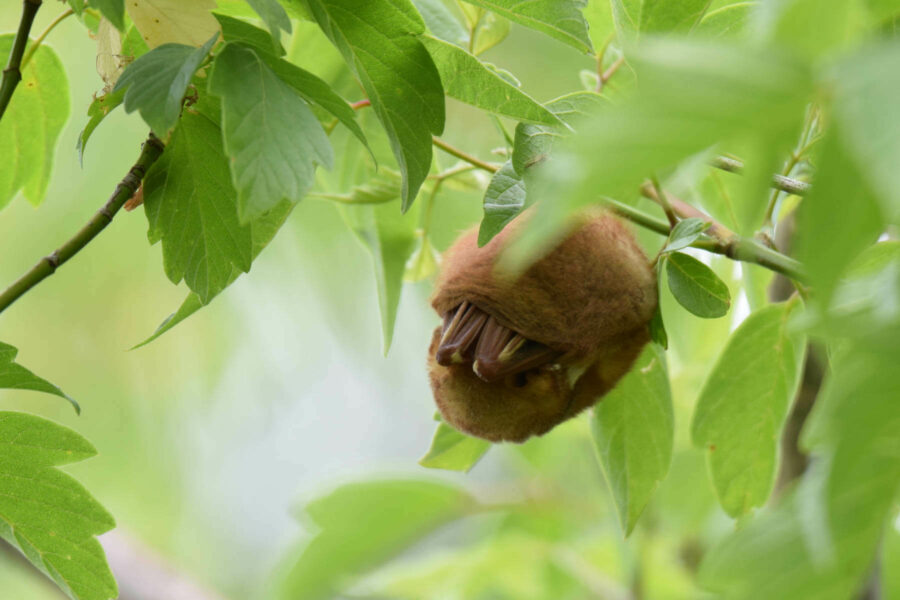A tiny fuzzy bat calls Chesapeake trees home

A late summer sunset is a beautiful thing to behold, with the sky changing into a vibrant orange before fading into a deep blue. The sunset might be the star of Chesapeake evenings, but a watchful eye can catch quick glimpses of movement near the tree line, the silhouetted shufles of an important hunter: the eastern red bat.
As most humans are winding down, bats are just waking up. These are incredible creatures—bats are the only mammal that can fly like a bird and use echolocation like a dolphin. In the Chesapeake Bay watershed, the eastern red bat is the most common and is most active right at dusk.
Eastern red bats are solitary tree bats that roost in trees, unlike cave bats that roost in colonies in caves. Their solitary nature has spared them of white-nose syndrome, a terrible fungal disease that has wiped out entire colonies of cave bats. Above ground, eastern red bats tend to roost in dense tree cover four to 10 feet in the air. Their small size and rusty coloring act as excellent camouflage as many humans and predators mistake them for dead leaves and pinecones.
Trees are essential roosting and foraging habitat for bats. A single oak tree can support over 500 species of butterflies and moths, which are the primary food source of the eastern red bat. As voracious predators, bats provide natural pest control, so giving them a place to live can help keep the local ecosystem balanced.
Eastern red bats are more tolerant of light pollution that other species, including big brown and little brown bat. Sometimes, eastern red bats will hunt near streetlights and take the same flight path every night.
Eastern red bats inhabit the Bay watershed from spring to fall. Their bodies are adapted to help them survive in the cold conditions common in eastern North America. The long hairs covering their body help add insulation and even cover their tails which they use as a small blanket in cold weather. Although they can handle lower temperatures than many bats, eastern red bats can only survive at about 23 degrees Fahrenheit and have to migrate each year.
Traveling along the Atlantic Flyway, the bat’s annual migration south is one of the best opportunities for researchers to estimate population numbers. Their solitary nature makes it difficult to estimate their population size because they do not roost in large colonies where they can be easily measured. Although the eastern red bat is listed as stable, studies suggest their population might be in decline.
To help native bat populations, encourage tree planting and native plant gardens in your neighborhood, consider adding a bat box to your property, reduce the application of pesticides and decrease light pollution. If you’d like to learn more about a variety of bats native to the watershed, visit our Field Guide.

Comments
There are no comments.
Thank you!
Your comment has been received. Before it can be published, the comment will be reviewed by our team to ensure it adheres with our rules of engagement.
Back to recent stories